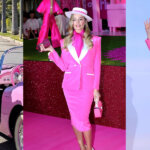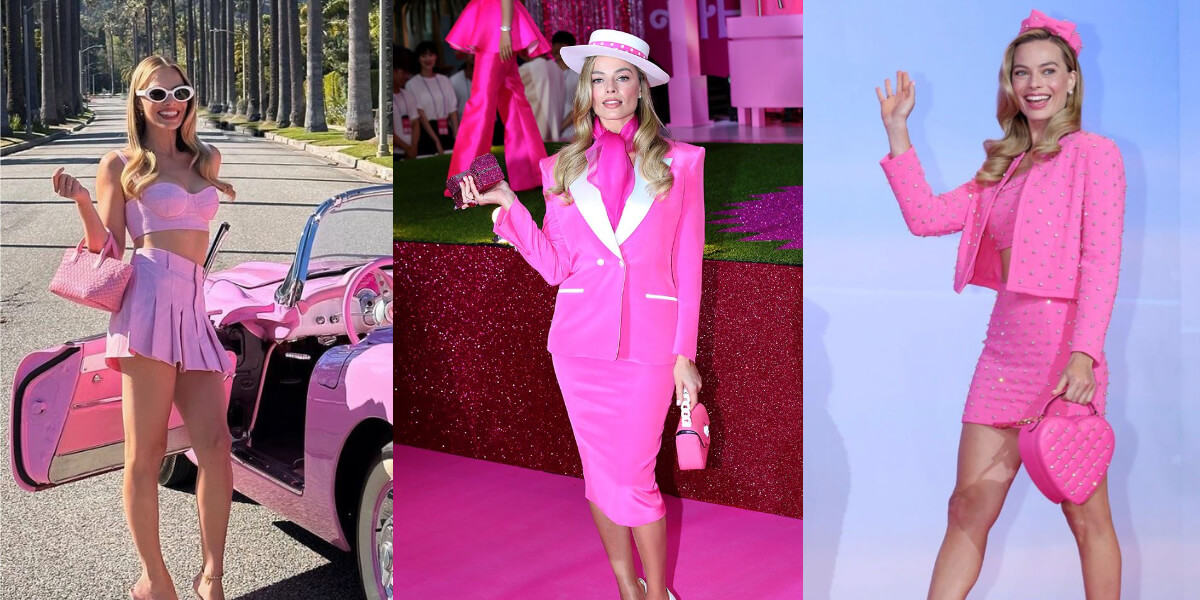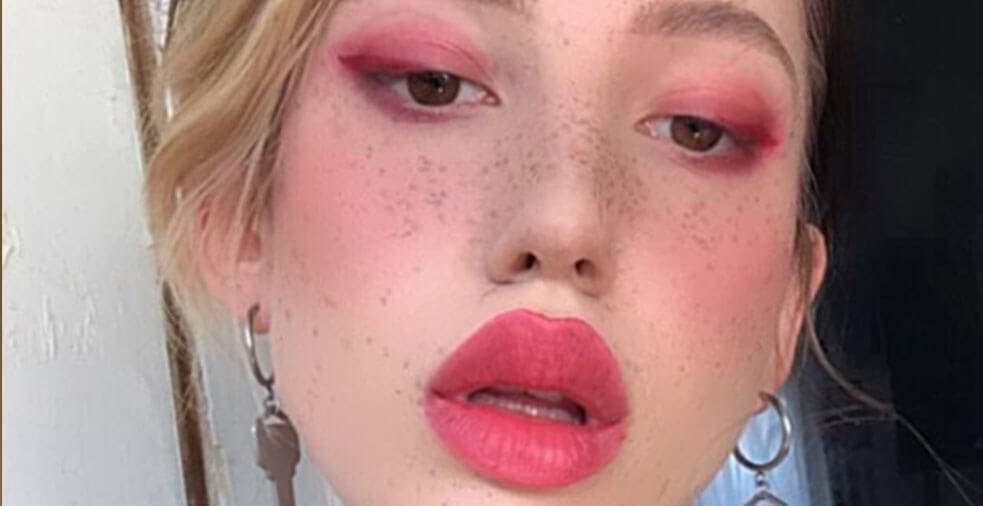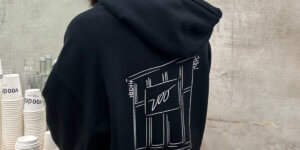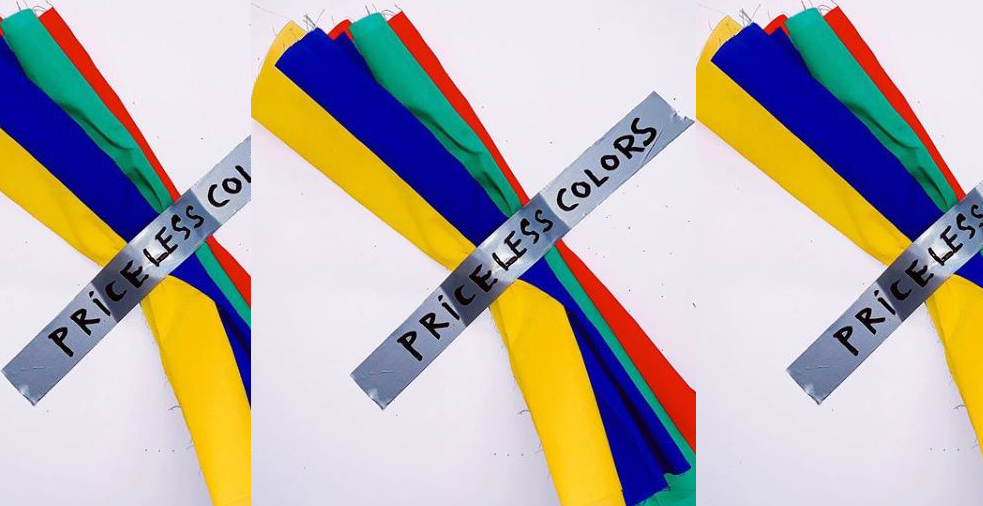Indeed, Barbiecore is having its moment, as Greta Gerwig’s highly anticipated Barbie movie, featuring Margot Robbie and Ryan Gosling, finally graces the big screens.
Last year, the doll’s favored hue took the fashion world by storm when Valentino’s Pierpaolo Piccioli showcased the vibrant shade on the catwalk in March 2022. It captured the zeitgeist, as consumers were freed from pandemic restrictions and tossed off their loungewear. “Dopamine dressing” — getting outfitted to feel as well as look good — took hold. The mood has shifted. Prints have become quieter and the silhouette has morphed from midi-dresses to more figure-hugging styles. Well-cut classics, quality basics and muted colors are in demand for men and women.
Now, with the movie generating a whirlwind of excitement, consumers are reigniting their passion for vivid colors, drawn to the alluring prints curated by costume designer Jacqueline Durran for Barbie’s ensembles. Additionally, the nostalgic charm of Barbie and Ken’s outfits from the ’80s and ’90s has struck a chord, as this era defies fashion oblivion, adding to the popularity of the Barbiecore hashtag, which has amassed an impressive 500 million views on TikTok.
Muted fashion has held sway for a while, but the movie is rekindling the allure of brighter styles. On the Lyst fashion platform, searches containing the term “Barbie” have surged by an impressive 271% in the past two months compared to the previous period. Likewise, searches for “gingham pieces” have experienced a notable 72% increase. The film’s strategic release and pre-launch marketing frenzy cleverly coincided with the onset of summer, prompting many to contemplate their vacation wardrobes. The allure of warm weather on both sides of the Atlantic has also nudged consumers towards shopping for essential summer items. What better way to grace the beach than with a nostalgic retro pink two-piece?
The Barbie team quickly adopted this as their own: The marketing rollout for Greta Gerwig’s movie has been impressive, ubiquitous, and extremely pink, spanning countless brand collaborations and in-person activations, but some of the most compelling marketing for the film comes straight from its star, Margot Robbie.
As Robbie, who plays the world-famous doll in the film, has promoted Barbie ahead of its July 21 release, fans have delighted in her impeccable red carpet recreations of Barbie’s most glamorous looks from over the years. Working with stylist Andrew Mukamal, Robbie has sported high fashion versions of iconic outfits worn by Barbie in different eras, from the legendary black and white striped swimsuit worn by the first Barbie in 1959 to the hot pink day-to-night working woman ensemble that a career-minded doll wore in 1985. According to Robbie, the recreations are tributes to Barbie fans.
“We’re finding Barbie references from decades past and just doing it really for the big Barbie fans out there, people who are actually collecting those Barbies,” Robbie told People at the film’s premiere in Los Angeles, where she wore a custom Schiaparelli recreation of the black cocktail dress worn by the 1960 “Solo in the Spotlight” Barbie. “We’re hoping to get them excited… We’re pairing Barbie references with great designers.” That Robbie’s tour looks became a fashion phenomenon is fitting, given that Barbie inventor Ruth Handler always intended for fashion to be a major part of the doll’s appeal. Fed up with the lack of toy options for girls, who typically could choose between baby dolls or paper dolls to play with, Handler created one through which they could embody their future dreams—in part by dressing her in different outfits.
And that is exactly what is happening at the moment - For Mattel Inc., the company behind Barbie, the stakes are as high as expected, particularly in terms of revitalizing sales of Barbie dolls and accessories. While the demand for toys flourished during the pandemic, the industry experienced a cooling effect as lockdowns eased and economic challenges emerged due to inflation. The film’s performance is not only pivotal for Mattel but also holds broader significance for the consumer sector, evident in Mattel’s collaboration with over 100 companies.
The film’s buzz has already given a significant boost to Mattel’s share price. Retailers like Gap Inc. and Associated British Foods Plc’s Primark, the discount retailer expanding in the US, offer a wide range of Barbie clothes and accessories, while L’Oreal SA’s mass-market NYX caters to Barbie cosmetics enthusiasts. Additionally, Barbie-themed dog coats, rugs, and roller skates are available. Moreover, you can experience the charm of Barbie’s Malibu DreamHouse, a colorful mansion, through a special promotion on Airbnb Inc. Even Birkenstock has joined the action with a cameo in the film. According to Lyst, the most sought-after Barbie collaboration is currently the shoe collection by Aldo Group Inc.
Given that the Barbie bandwagon – or rather, pink Chevrolet convertible – has been rolling into town since photos of Robbie and Gosling rollerblading on Venice Beach leaked a year ago, it’s not surprising that companies are jumping on board. Quirky collaborations, such as with Crocs, whose own fun aesthetic blends well with Barbie’s, create a buzz. But there is a multiplier effect from the huge marketing effort by Mattel and Warner Bros. Discovery Inc. That means more bang for your Barbie buck.
As companies try to navigate the culture wars, the film has also hit a sweet spot. There is something wholesome and nostalgic about Barbie, yet the feminist retelling makes her more relevant to today’s audiences. In her world, Barbie characters are presidents, doctors and lawyers. Ryan Gosling’s Ken, who still clings to outdated gender norms, is relegated to a supporting role, turning the usual Hollywood dynamic on its head. The film also embraces diversity, with Barbies of different skin colours and body shapes, as well as a transgender Barbie, reflecting the doll’s own evolution.
The products themselves add excitement to retailers’ assortments. They’re a way to draw fans who want a gingham pyjama set or a logo-emblazoned bucket hat to stores or websites. While they are caught up in the movie mania, they may also put a regular item in their basket.
The doll has existed for 64 years and has not only carried trends from all decades during this time. She has become a trademark herself. Barbie as the Original Girlboss of marketable lifestyle feminism.
Because she can be anything and always look perfect. In her 64 years, she has worked in more than 200 professions. There is Barbie as a surgeon, Barbie as a Nobel Prize winner and as a candidate for the American presidency. Her inventor, Ruth Handler, once said, “Every girl needs a doll through which she can project herself into the future of her dreams.”
For the women’s rights movement of the 70s, Barbie was the bogeyman par excellence. Yet in 1965 she was already an astronaut. At that time, women in the Federal Republic of Germany could only work if it was “compatible with their duties in marriage and family”.
Over the decades, the doll was repeatedly reduced to her appearance. She would promote unhealthy ideals of beauty, especially false body images, according to the critics. Moreover, her pink colourful feminine looks were considered unfeminist. But femininity is a thing. Barbiecore is one of a series of trends of recent years: pinkcore, balletcore, princesscore. They are all very similar and all use a very feminine aesthetic. There is also a term for this, namely “hyperfemininity”.
Femininity is not an easy subject, just like the colour pink in this context. It is associated with femininity and stands for old gender norms in the pink-blue binary. At the same time, feminist movements use this very colour to empower themselves. In this way, they want to link the colour anew and occupy it from their feminist point of view.
The whole aesthetic looks familiar. Jogging suit in all-pink, long blonde hair, big sunglasses. Sure, that’s Paris Hilton. The Barbie trend fits in fashionably with this era – in the look of Y2K , which currently dominates fashion. At the beginning of the decade, a girly look with fluffy, colourful scrunchies, sequin tops and lots of pink was in fashion. Britney Spears and Paris Hilton shaped this style. The film “Naturally Blonde” was also released at that time. Reese Witherspoon plays Harvard student Elle Woods with a very girly look. There is probably not a scene in which she does not wear pink. Yet the film conveys one message above all: a woman’s appearance says absolutely nothing about her character or her abilities. Actually, a rather feminist approach.
At the time, however, people were desperate to get rid of the girly-ness. This led to the development of a counter-movement: the “Pick Me Girls”. This group doesn’t want to be like other women, they’d much rather hang out with men because they’re much more relaxed anyway. Wearing lumberjack shirts, white shirts and jeans, the Pick Me Girls looked down on the “chick thing”, which they considered backward. Nowhere is this better expressed than in the cult film “Mean Girls”, in which the girl-girls, the Plastics, are portrayed as less intelligent who have nothing to offer except looking cute. In an attempt to shed typical femininity, the trend reinforced negative clichés of dumb blondes and femininity.
Barbiecore is not coming back for the first time. In the 2010s, Nicky Minaj used the aesthetic – but from the perspective of a woman of colour. Just like Barbie, the wearers of the trend in the 2000s were primarily one thing: white, thin and blonde. Both the Pick Me Girl and Barbie were long viewed from this white feminist perspective. For Black women, who are more often seen as masculine, or for heavily overweight women, for whom the fashion industry produced only shapeless clothes for too long, the expression of femininity played a very different role anyway.
Unlike in the 2000s, however, Barbiecore today is more inclusive. Everyone can in theory participate. The fashion wearers who embody the trend online are not only white and blonde, they are black, Muslim, curvy, non-binary and can have a disability.
So better enjoy it while it lasts, because while the aesthetic is currently in vogue, this may be the last hurrah for Barbiecore.
Trend forecaster WGSN indicates that “hyper” pink, a prominent feature of Barbiecore, has already reached its peak. Retailers have increased the availability of bright pink products this summer, but discounts are becoming more prevalent. The economic climate, with elevated borrowing costs in Europe and potential mortgage concerns in the UK, suggests that shoppers might not splurge on extravagant fashions. Sober styles still resonate with consumer sentiment. Nevertheless, for the coming weeks, Barbie’s world will captivate everyone’s attention.








